
Pictures Of Ankle MusclesHealthiack
25K Share 2.2M views 11 years ago Animated Orthopedic Anatomy Tutorials In this episode of eOrthopodTV, orthopaedic surgeon Randale C. Sechrest, MD narrates an animated tutorial of the anatomy.
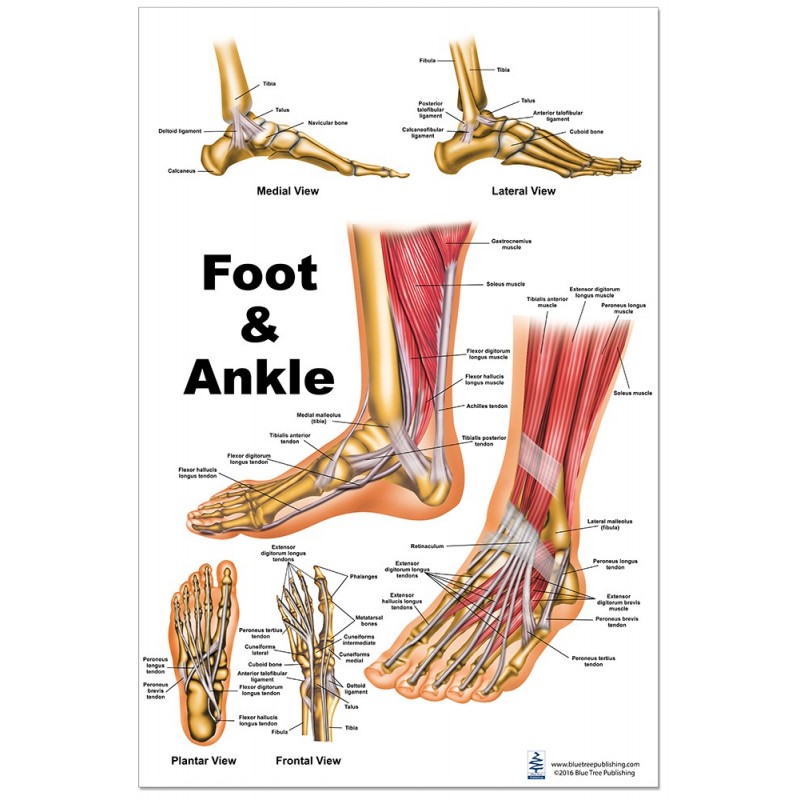
diagram of foot and ankle
The talus, or ankle bone: The talus is the bone at the top of the foot. It connects with the tibia and fibula bones of the lower leg. The calcaneus, or heel bone: The calcaneus is largest of.

ankle anatomy Health ankle anatomyankle anatomy
Anatomy of the foot and ankle. Arthritis Foundation. Anatomy of the foot. PHED 301 Students BC Campus. Advanced Anatomy 2nd. Ed.: The Foot. Bito T, Tashiro Y, Suzuki Y, et al. Forefoot transverse arch height asymmetry is associated with foot injuries in athletes participating in college track events.

Ankle Anatomy Sport Med School
Function What does the ankle joint do? Your ankles bend and flex anytime you're moving to keep you stable and maintain your balance. Your ankles move in two directions: Plantar flexion: Down, away from your body. Dorsiflexion: Up, toward your body. Anatomy Where is the ankle joint located? The ankle is at the lower end of your leg.
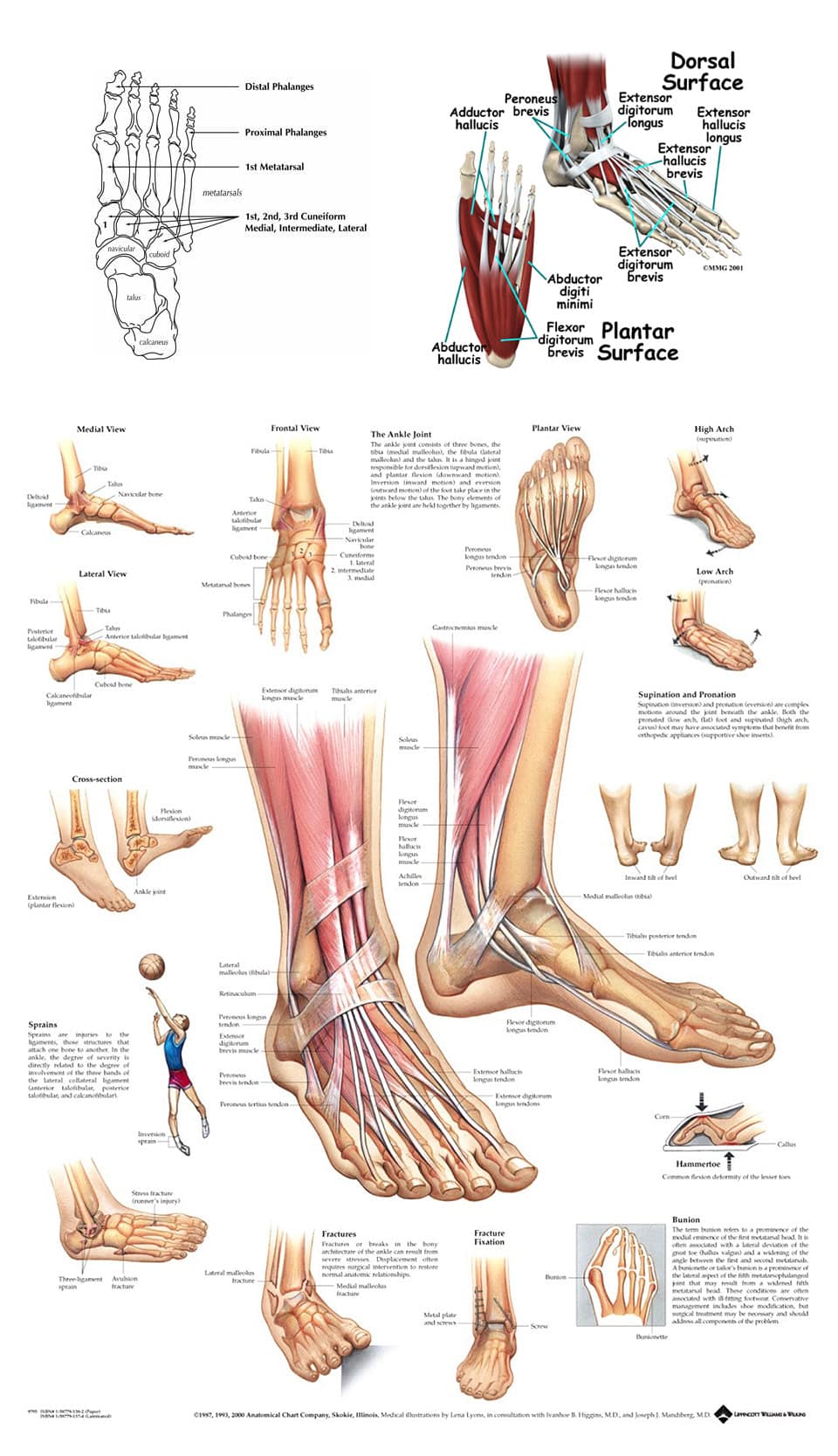
Anatomy of the Foot and Ankle Astoria Foot and Ankle Surgery
The anatomic structures below the ankle joint comprise the foot, which includes: Hindfoot: The hindfoot is the most posterior aspect of the foot. It is composed of the talus and calcaneus, two of the seven tarsal bones. The talus and calcaneus articulation is referred to as the subtalar joint, which has three facets on each of the talus and.
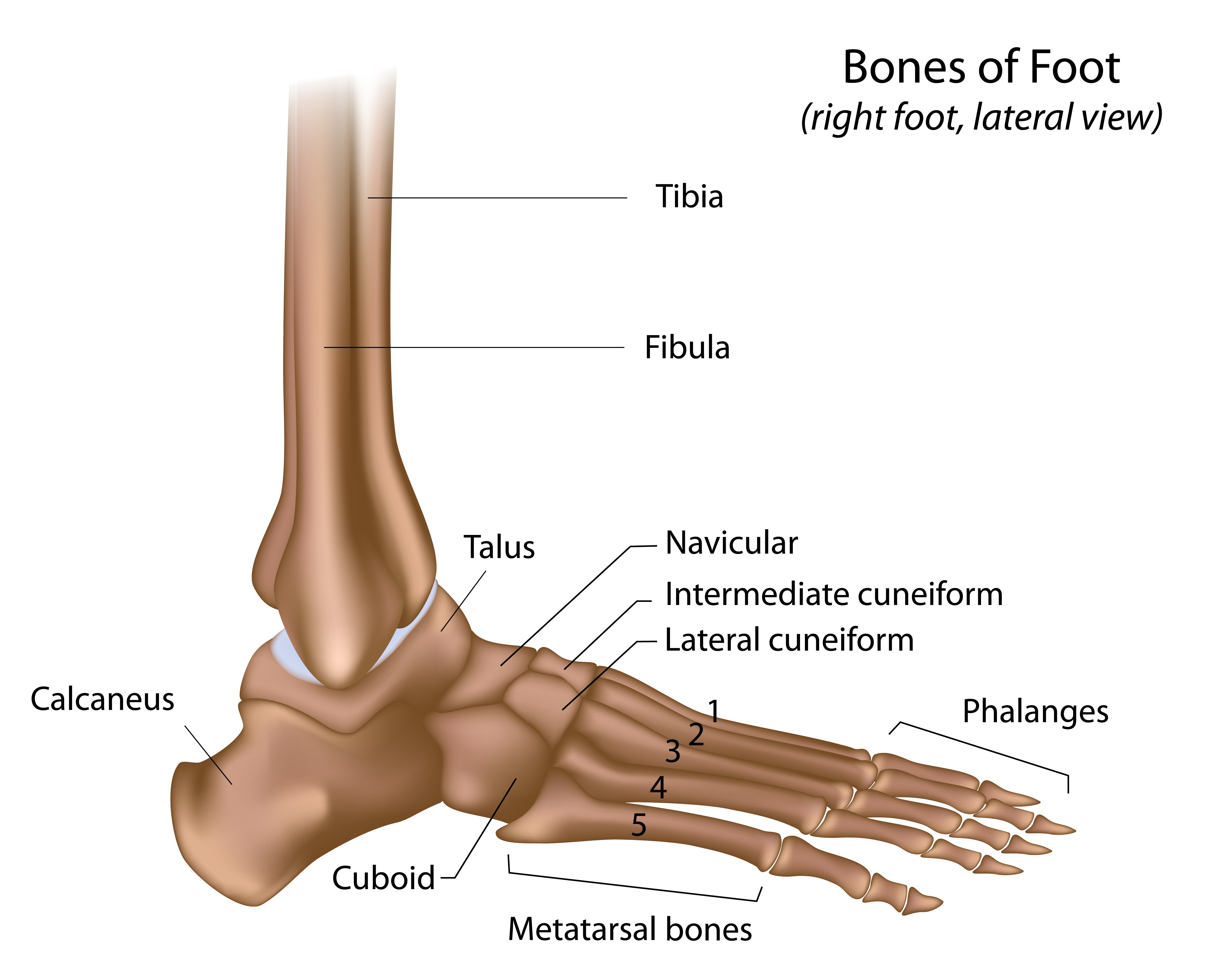
Ankle and Foot Pain Massage Therapy Connections
The foot and ankle form a complex system which consists of 28 bones, 33 joints, 112 ligaments, controlled by 13 extrinsic and 21 intrinsic muscles. The foot is subdivided into the rearfoot, midfoot, and forefoot. It functions as a rigid structure for weight bearing and it can also function as a flexible structure to conform to uneven terrain.

Understanding the Foot & Ankle Scientific Publishing
3.9K Share 747K views 11 years ago Foot/ Anatomy Dr. Ebraheim's educational animated video describes anatomical structures of the foot and ankle, The Bony Anatomy, The Joints, Ligaments,.
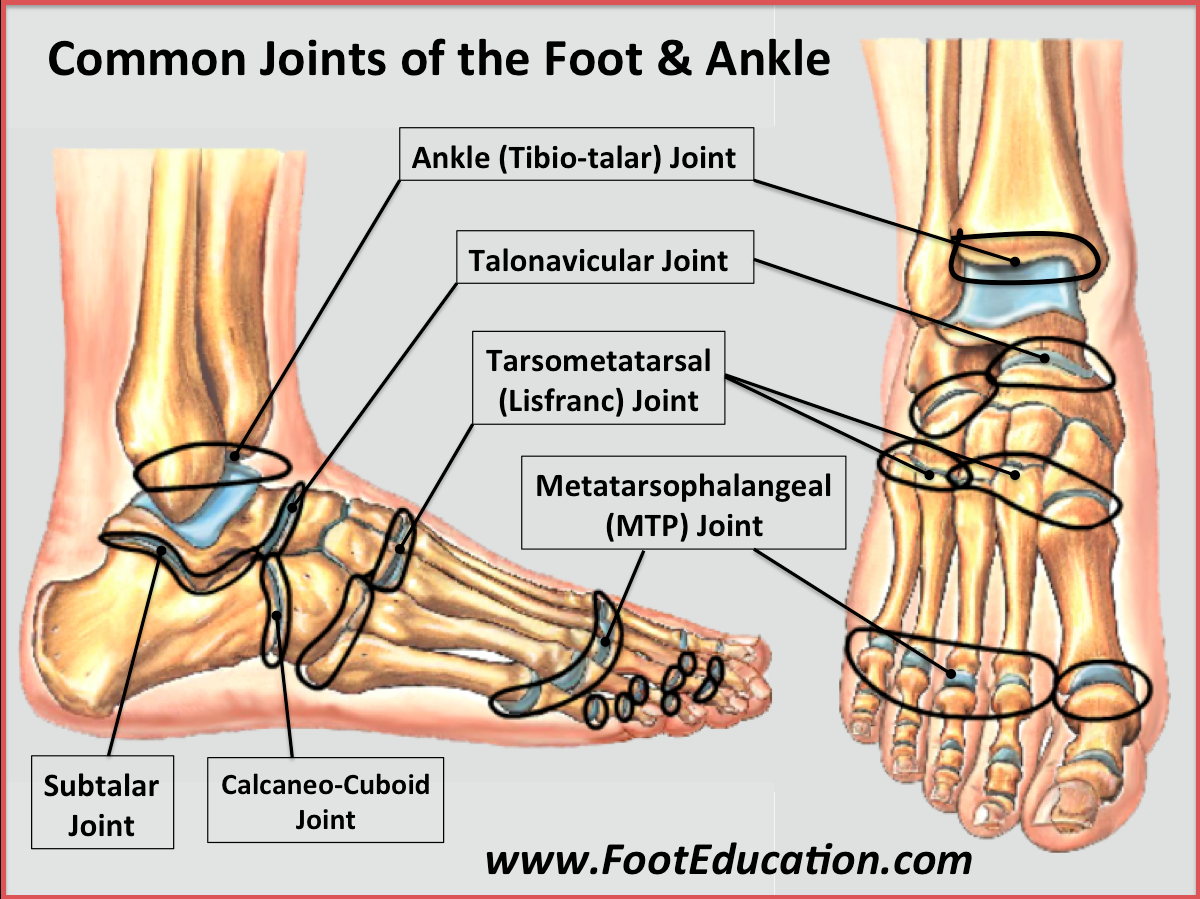
Bones and Joints of the Foot and Ankle Overview FootEducation
The ankle joint or tibiotalar joint is formed where the top of the talus (the uppermost bone in the foot) and the tibia (shin bone) and fibula meet. The ankle joint is both a synovial joint and a hinge joint. Hinge joints typically allow for only one direction of motion much like a door-hinge.

Foot and Ankle Musculoskeletal Key
Introduction A solid understanding of anatomy is essential to effectively diagnose and treat patients with foot and ankle problems. Anatomy is a road map. Most structures in the foot are fairly superficial and can be easily palpated. Anatomical structures (tendons, bones, joints, etc) tend to hurt exactly where they are injured or inflamed.
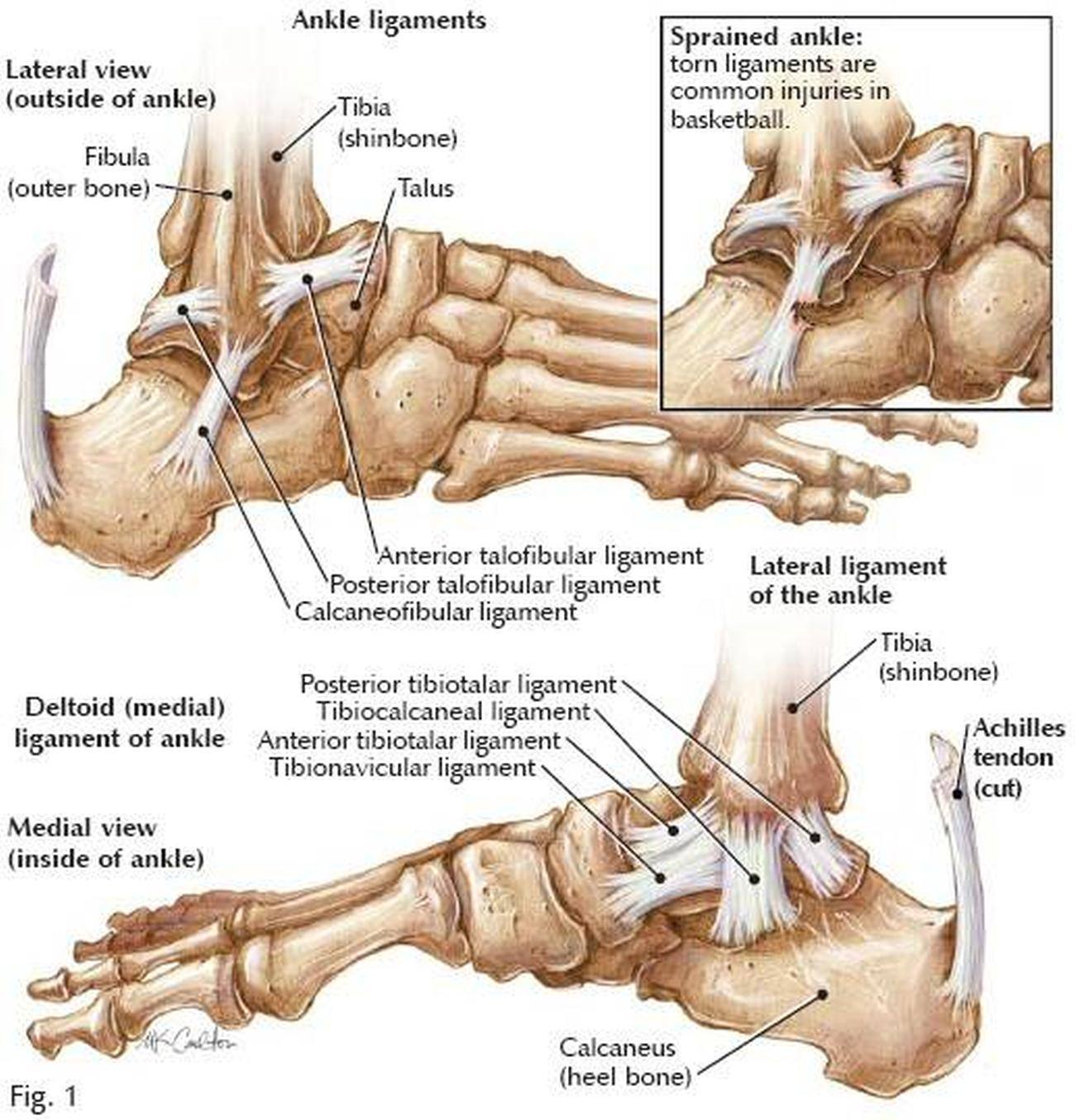
Pictures Of Ankle Joint Ligaments
In this animated episode of eOrthopodTV, orthopaedic surgeon Randale Sechrest, MD discusses the anatomy of the ankle joint.
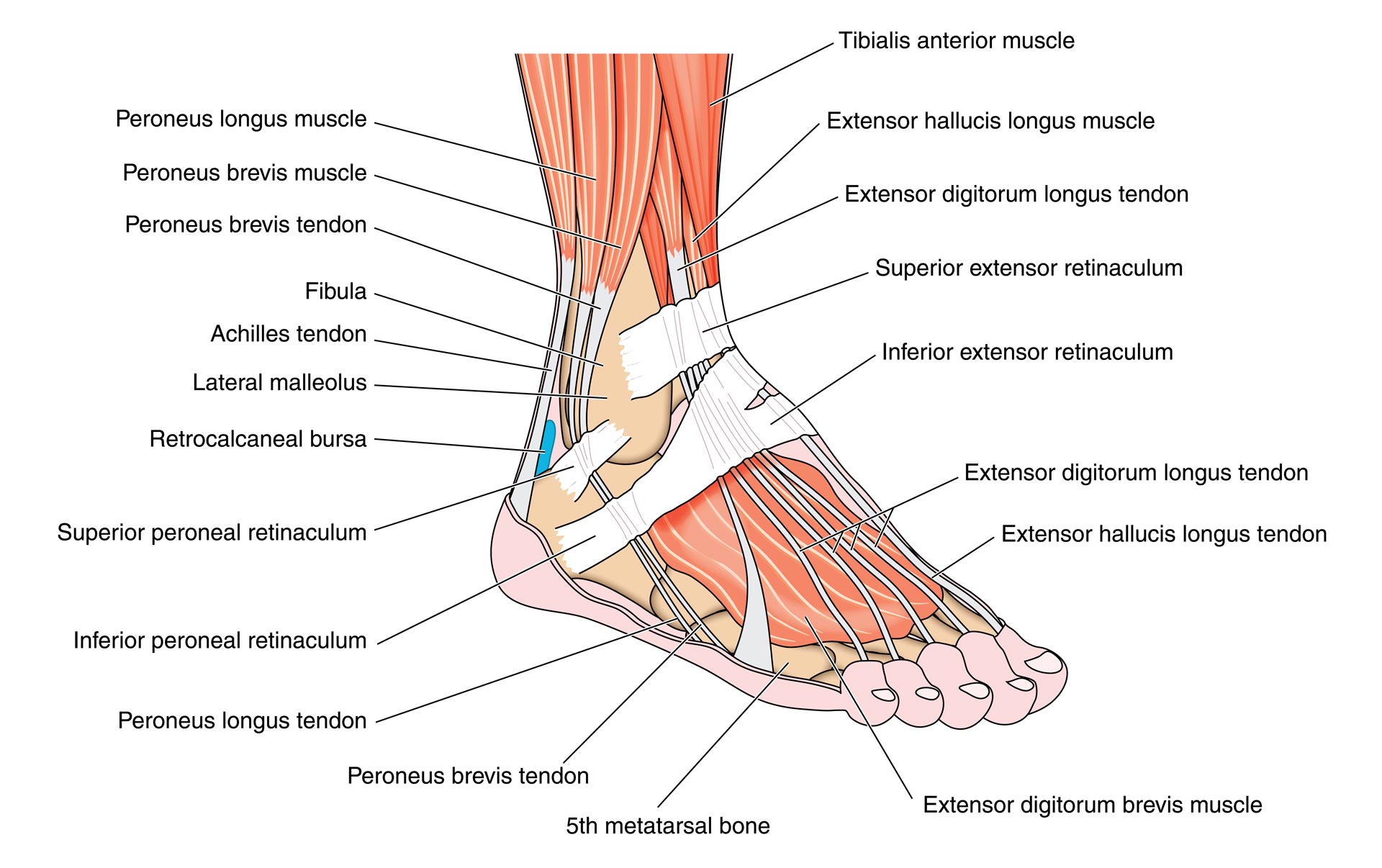
Common Ankle & Foot Disorders Comprehensive Diagnosis & Treatment
The ankle is the region in the human leg where the lower leg meets with the proximal end of the foot. The ankle allows us to move the feet in different directions. Names and Anatomy of the Bones in the Ankle
:max_bytes(150000):strip_icc()/GettyImages-687795661-969f111662dc4df7a9c3d78c17045ea6.jpg)
Anatomy and Physiology of the Ankle for Sports Medicine
It is made up of over 100 moving parts - bones, muscles, tendons, and ligaments designed to allow the foot to balance the body's weight on just two legs and support such diverse actions as running, jumping, climbing, and walking. Because they are so complicated, human feet can be especially prone to injury.
Tendons And Ligaments In Foot And Leg Lateral Ankle Anatomy Lower Leg Ankle And Foot
The ankle joint, also known as the talocrural joint, allows dorsiflexion and plantar flexion of the foot. It is made up of three joints: upper ankle joint (tibiotarsal), talocalcaneonavicular, and subtalar joints. The last two together are called the lower ankle joint.

Anatomy of the Foot and Ankle OrthoPaedia
Ligaments of the Foot and Ankle. Tell us where the pain is. Use our interactive tool. Use our Anatomy tools to learn about bones, joints, ligaments, and muscles of the foot and ankle. FootEducation is committed to helping educate patients about foot and ankle conditions by providing high quality, accurate, and easy to understand information.

Muscles that lift the Arches of the Feet
Ligaments Ankle ligament injury is the most frequent cause of acute ankle pain. Hence, it is important to understand the anatomy of ankle ligaments for correct diagnosis and treatment.
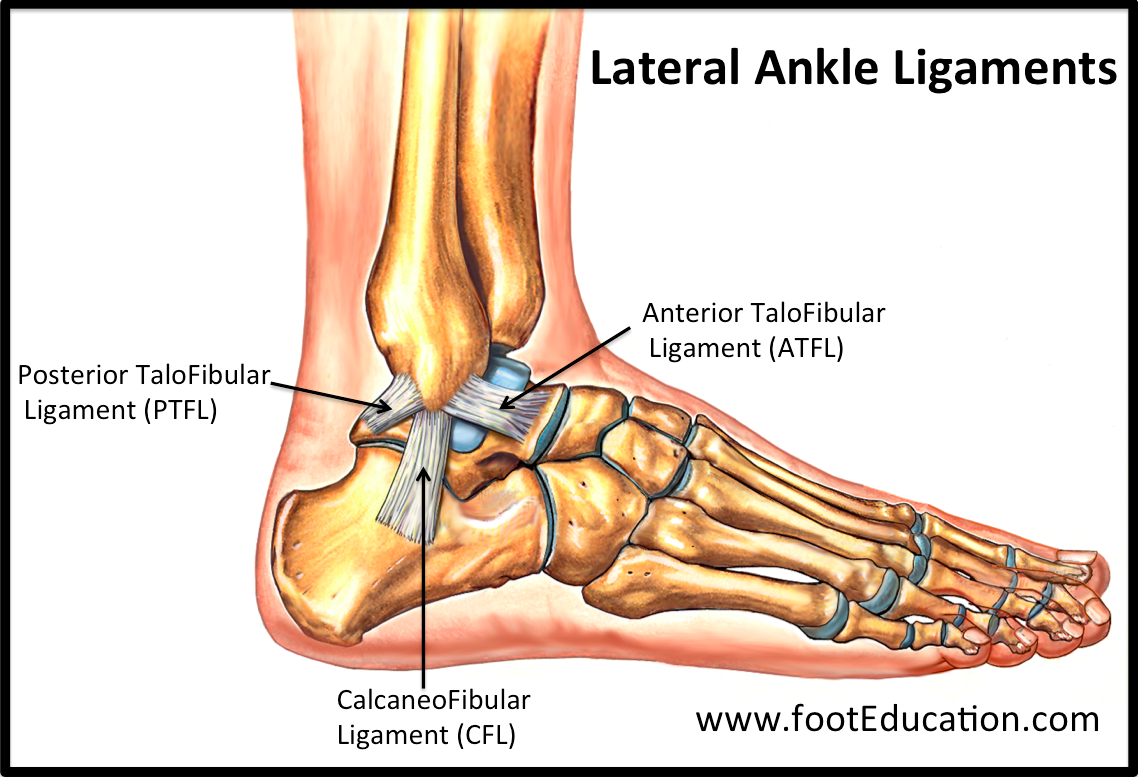
Ligaments of the Foot and Ankle Overview FootEducation
The ankle joint is formed by three bones; the tibia and fibula of the leg, and the talus of the foot: The tibia and fibula are bound together by strong tibiofibular ligaments. Together, they form a bracket shaped socket, covered in hyaline cartilage. This socket is known as a mortise.